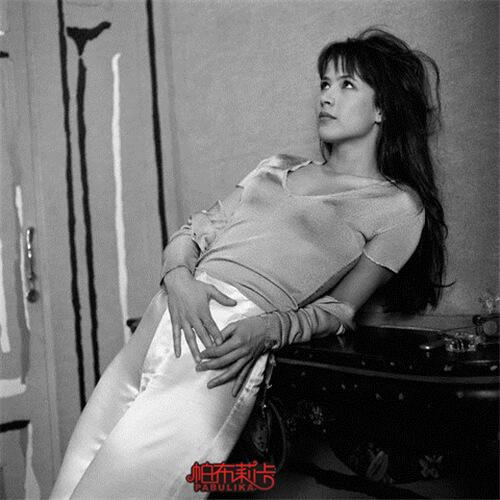白描
Plain Line Drawing
中国画的表现手法之一。用墨线勾勒描墓物象的轮廓,不设颜色。白描多用于画人物、花卉,着墨不多,气韵生动。白描源于古代的“白画”。一般运用同一墨色,通过线条的长短、粗细、轻重、转折等表现物象的质感和动势。白描流行于晋唐时期,宋代以后自成一格。晋代顾恺之、北宋李公麟、元代赵孟頫等擅长铁线描,唐代吴道子、南宋马和之等擅长兰叶描。
Plain line drawing is one of the traditional Chinese styles of artistic presentation. It features the contours of images sketched in black ink lines. This style of painting is mostly used in painting human figures and flowers. Although not much ink is applied, this technique can achieve a very lively effect. Plain line drawing originated from the plain drawing of earlier times; through variations in lines’ length, thickness, pressure, and changes in trajectory, the artist can portray the texture and motion of images. Plain line drawing was prevalent from the Jin Dynasty through the Tang Dynasty. During the Song Dynasty, it formed a distinctive style of its own. Gu Kaizhi of the Jin Dynasty, Li Gonglin of the Northern Song Dynasty, and Zhao Mengfu of the Yuan Dynasty specialized in painting lines of perfectly even width like iron wire, while Wu Daozi of the Tang Dynasty and Ma Hezhi of the Southern Song Dynasty were renowned for their skill in drawing thick, wavy lines resembling orchid leaves.
🎈原文为典型的中文句结构,用字简练,常用四字排比短句,因此在译为英文时,应根据意群将句子拆分重组,并将句子成分补充完整,改写为符合英文行文习惯的句子。在翻译第二句“用墨线勾勒描墓物象的轮廓,不设颜色”时,译文增译出了“它的特点是”(it features)这一原文中没有但却暗含的意思,表示此句话是在介绍白描的特点。此外,译文略去了“不设颜色”的翻译,因为,上文介绍说白描是用墨线勾勒,只有黑色,所以其意思已经包含了“不设颜色”,故减译。
🎈在翻译“着墨不多,气韵生动”时,原文中所暗含的让步关系,即(虽然)着墨不多,(但却)气韵生动,故而译文使用了“although”一词,点出了两句之间的表示让步的逻辑关系。
🎈在翻译“通过线条的长短、粗细、轻重、转折等表现物象的质感和动势”时,译文没有拘泥于原文,将两两对立的形容词生搬硬套,而是巧妙地运用“variations in lines’ length, thickness, pressure, and changes”,表示出了线条的各种变化。
🎈在翻译“自成一格”时,译文没有停留在表层意义,而是深究其深层意义,译出了“形成了自己所独有的风格”(formed a distinctive style of its own)的意思。
🎈在翻译“晋代顾恺之、北宋李公麟、元代赵孟頫等擅长铁线描,唐代吴道子、南宋马和之等擅长兰叶描”时,译文用了“specialized in painting lines of perfectly even width like”和“were renowned for their skill in”两种表示“擅长”的表达方式,遵从了英语避免重复的表达方式。
白描也是文学创作中非常重要的表现手法,主要指用朴素简练的笔墨,不加烘托渲染,描绘出鲜明生动的形象。古典小说《水浒传》《三国演义》等多有高超的白描手法。
Plain drawing is also a very important style of expression in narrative literature. In this context it refers to a simple and concise style of writing, without embellishment, so as to produce fresh, lively images. In classic novels such asOutlaws of the Marsh or Romance of the Three Kingdoms, one finds abundant instances of a plain drawing style of writing.
🎈中文行文多为并列句,因此在翻译时需要根据意群进行拆分重组,改写为符合英文行文习惯的句子。在本句的翻译中,译文改写为一个总起句和一个具体介绍句,即先说明白描在文学创作中的地位,再另起一句解释白描这种艺术手法在文学中是怎样体现出来的。
🎈在翻译“古典小说《水浒传》《三国演义》等多有高超的白描手法”一句时,译文没有生硬的用“have”这一不符合英文表达习惯的词,而是巧妙地翻译为“我们能够在书中寻到大量的白描手法”(one finds abundant instances of a plain drawing style of writing),从而使得译文地道而自然。
🎈重点表达
白描 plain line drawing
外形,轮廓 contour
达到…效果 achieve…effect
起源于 originated from
弹道,(射体在空中的)轨道,轨迹 trajectory
流行的,盛行的 prevalent
自成一格 form a distinctive style of one’s own
专攻,专门研究 specialize in
以…闻名 be renowned for
类似于,像 resemble
兰花 orchid
装饰,修饰 embellishment
为了,以便 so as to
《水浒传》 Outlaws of the Marsh
《三国演义》 Romance of the Three Kingdoms
未经允许不得转载:帕布莉卡 » 《中国传统文化关键字》白描 -英语翻译教程-中英双语赏析
 帕布莉卡
帕布莉卡


 爱是一颗心遇到另一颗心(出处+配图)
爱是一颗心遇到另一颗心(出处+配图) 

